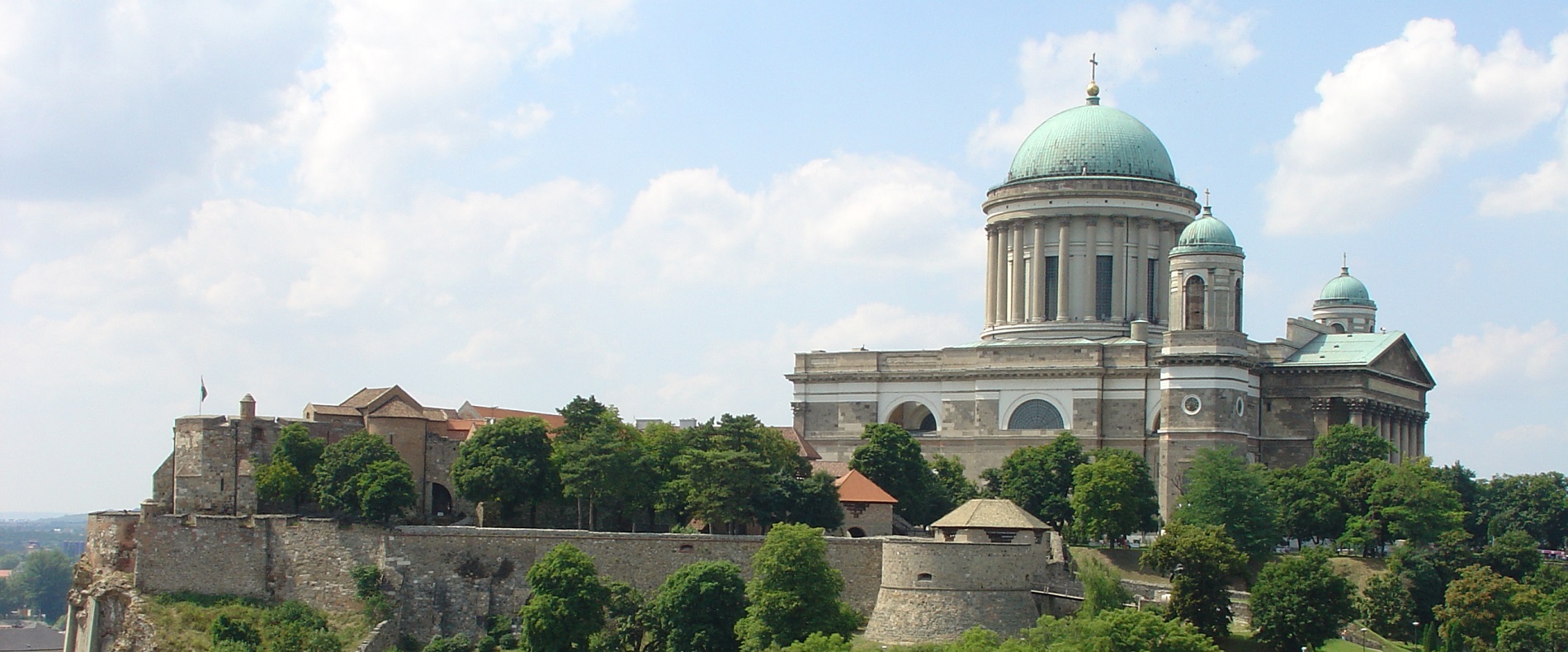
The medieval Hungarian royal capitals in Esztergom and Visegrád, and the territory of the formal royal forest in the Pilis
In the picturesque natural landscape of the Danube Bend, the volcanic Visegrád Mountains and the Börzsöny across the river constitute one unit, and the Pilis is the highest of the limestone and dolomite ranges of the Transdanubian Mountains. These two mountain areas are covered by the same kind of forests, and medieval sources also refer to them as ‘Pilis’.
The Pilis is located at the center of the former Kingdom of Hungary, roughly on the same territory as what used to be a county of the same name and the part of the Duna-Ipoly National Park lying south to the River Danube. At the edge of this territory stand the most prominent cities of medieval Hungary: Esztergom, the first seat of the Hungarian kings and archbishops, and Visegrád, a royal capital from 1323 to the 1410s. The historical landscape of the Pilis – that has never changed in its essence during the past centuries – is outstanding even in Europe, a unique example of the characteristic land use of royal estates and forests established in the Middle Ages.
Including the built environment of the royal capitals of Esztergom and Visegrád, the territory of the Pilis was characterized by uniformly organized operation and territorial delimination throughout the Middle Ages. Its medieval settlement and landscape history was formed by the unique way of royal ownership of forests, the main purpose of which was to supply the royal court with game, and the members of the royal families also took part in the hunts. Royal residences and hunting lodges were built in the forest – for other persons or bodies, the acquisition of properties was denied or restricted. The only exemption were certain religious institutions, such as the royally founded monasteries, standing as economic and spiritual centers and special manifestations of royal might.
The Lower and Upper Castle of Visegrád, the building of which started in the middle of the 13th century, as well as the ruins of the royal palace complex on the bank of the Danube are unique representations of a medieval European royal residence and its environment. The city witnessed the historic moment of the Congress of Visegrád in 1335, a summit in which Kings John I of Bohemia, Charles I of Hungary and Casimir III of Poland formed an alliance against the Habsburgs. The royal palace, remodeled in the time of Matthias Corvinus, is the earliest known representation of Renaissance art outside of Italy.
The stone castle on the Castle Hill of Esztergom was built in the 10-11th centuries as the capital of Géza, Grand Prince of the Hungarians who integrated the country into the Roman Catholic Europe, and his son King Saint Stephen. Since the foundation of the archdiocese of Esztergom in 1001, the city has been the symbol of Christianity in Hungary for more than a thousand years now. The building complex of the archbishop’s palace is an influential regional (Central European) representation of the reception and dissemination of medieval and Renaissance art.
The royal forest and hunting ground of the Pilis, the monastery farms established at former hunting lodges, the royal capital and archbishop’s seat in Esztergom, and the medieval castles of Visegrád, the monument complex of the city and the royal palace shaped by the consecutive periods, are all historic locations of outstanding importance, as well as influential intellectual centers. The medieval castle of Esztergom, the royal palace of Visegrád and its environment are unique even if their fragments, standing as exceptional representations of medieval French and Italian art.
Visegrád and Esztergom stand out from other royal seats of Europe for being the only remaining royal capitals with a royal hunting ground in its immediate vicinity, which can be demonstrated in its full historical context. The historic landscape – with its natural features and architectural creations that remain spectacular even in their ruins – has become a national place of pilgrimage, as well as the subject of artistic and literary works.
